Roomba Technology and Effective Cat Hair Management
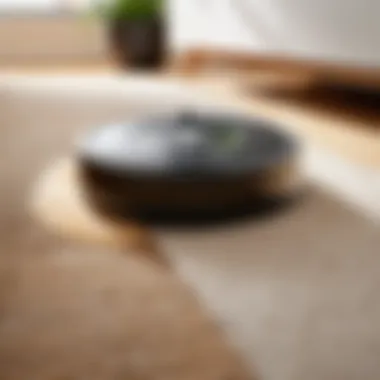
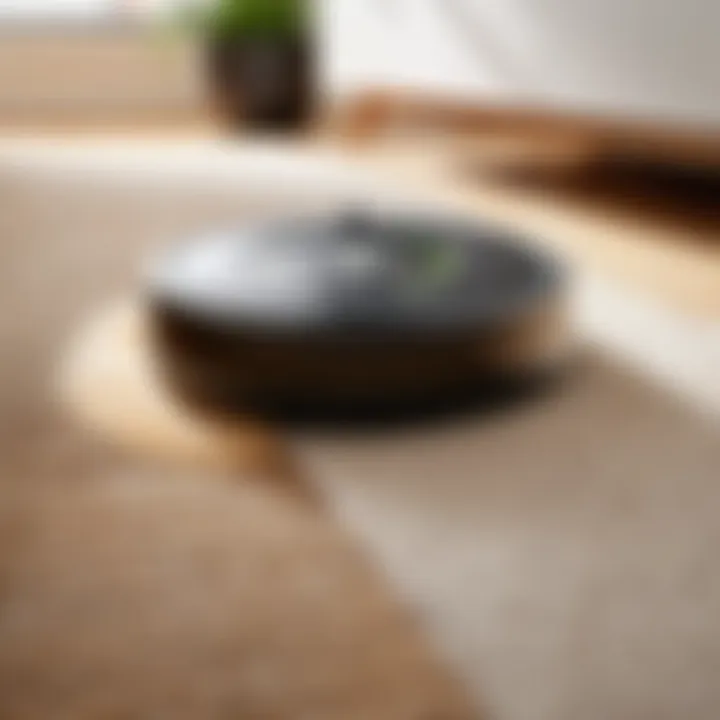
Intro
Cat owners know the struggle all too well: managing the constant shedding of fur while keeping their home tidy. In this modern age, technology has stepped up to tackle these furry challenges, particularly through robotic vacuums like Roomba. This intersection of robotics and pet care is worthy of exploration, as Roomba models increasingly become indispensable allies for individuals looking to maintain clean homes while minimizing the effort involved. What features make these devices so appealing for pet owners? What performance benchmarks can we expect? Let's delve into the fascinating world of Roomba technology and its cat hair management capabilities.
Features Overview
The Roomba series has evolved dramatically over the years, offering a range of specifications designed specifically for pet owners. The latest models incorporate cutting-edge features to combat cat hair effectively.
Key Specifications
- Powerful Suction: Roomba vacuums boast strong suction capabilities aimed at lifting stubborn pet hair from carpets and hard floors alike. Power is pivotal here; several models exceed 1700 Pa, making them quite effective for pet owners.
- Multi-Surface Brushes: Equipped with specially designed brushes, Roombas can transition seamlessly between different flooring types. For instance, the dual rubber rollers help grasp cat hair without tangling — a common annoyance in traditional vacuuming.
- Smart Technology: Advanced models, like the Roomba i7+, integrate smart mapping technology that allows them to learn the layout of your home. Users can even set up cleaning preferences based on specific rooms, ensuring areas with higher cat traffic are prioritized.
- Self-Emptying Feature: Some premium models come with a self-emptying base that holds up to 60 days of dirt, pet hair, and debris. This feature is invaluable for cat owners, meaning less frequent maintenance.
Unique Selling Points
Roomba vacuums come with features that set them apart from other cleaning devices:
- Integration with Home Automation: Roomba units easily connect to smart home systems. This can allow you to schedule cleanings through voice commands or apps, enhancing convenience.
- Pet-Specific Modes: Various models offer a dedicated 'Pet Hair' cleaning mode that optimizes performance for fur removal.
- User-Centric Design: Handling maintenance is straightforward. The brushes and bins can be removed and cleaned without the need for tools, appealing to busy lifestyles.
Performance Analysis
To fully appreciate Roomba vacuums for cat hair management, examining benchmark results and real-world scenarios is crucial.
Benchmarking Results
Performance studies often evaluate robotic vacuums based on multiple metrics, such as:
- Suction Power: Roomba models consistently achieve high performance ratings in tests for suction strength across various surfaces.
- Battery Life: The run-time for vacuuming can range between 75 to 120 minutes, allowing for thorough cleaning sessions without interruptions.
- Navigation Efficiency: The advanced sensors help the vacuum avoid obstacles and traverse from room to room with ease.
Real-world Scenarios
In a practical context, pet owners have shared their experiences while using Roomba vacuums:
- Many report reduced time spent cleaning compared to traditional methods.
- Issues encountered include navigating tight spaces or under furniture; however, newer models show a significant improvement in how effectively they adjust to such challenges.
"I used to dread vacuuming because of all the kitty fur. Now, I set my Roomba, and it does the hard work for me. The self-emptying feature is a game-changer!"
— A satisfied Roomba owner.
Overall, the intricacies behind Roomba technology not only address the challenges of living with cats but also enhance the overall cleaning experience for pet owners, reaffirming their position in modern households.
Foreword to Roomba Technology
In today’s fast-paced world, technology permeates almost every aspect of our daily lives, and household cleaning is no exception. Roomba technology, specifically designed to tackle the tedious task of vacuuming, has become a staple in many homes, especially those with furry friends. This section serves to underscore the vital role Roomba plays in the intersection of innovative cleaning solutions and pet hair management. It highlights how the evolution and features of these robotic vacuums have transformed how we approach keeping our homes tidy, particularly in homes with cats.
The advent of robotic vacuums like the Roomba signifies more than just a convenience; it's a blend of ingenuity and functionality. These devices not only save time but also reduce the physical strain of cleaning, which resonates with busy pet owners juggling numerous responsibilities. Furthermore, understanding the core components, functionalities, and advancements of Roomba units can illuminate their effectiveness and relevance in managing pet hair.
The Evolution of Robotic Vacuums
Robotic vacuums have come a long way since their inception. The first models often struggled with basic navigation and suction capabilities. They were clunky, required constant oversight, and did little more than push dirt around. However, technological advancements have propelled Roomba from simple devices to sophisticated home cleaning aids. Many of these models now incorporate sensors that allow them to navigate through homes efficiently, avoiding obstacles like furniture and creating efficient cleaning paths.
One significant milestone in this evolution is the integration of smart technology. It wasn’t long before models began to interact with smartphones, allowing users to set schedules, define cleaning zones, and monitor progress through applications. This ease of use coupled with powerful suction systems means that Roombas can handle the challenges posed by pet hair effectively. In fact, innovations such as adaptive navigation and advanced dust detection have pushed these machines beyond initial expectations, making them indispensable tools for cat owners.
Overview of Roomba Models
When discussing Roomba models, one can't help but notice the sheer variety tailored to different needs, especially concerning pet hair management. Each model boasts unique features aimed at enhancing cleaning efficiency.
- Roomba i3+: This model combines affordability with capability, offering strong suction and smart mapping technology. Ideal for homes with moderate shedding cats, the i3+ automates scheduling and includes a self-emptying base for added convenience.
- Roomba j7+: Known for being 'pet proof,' the j7+ boasts advanced obstacle avoidance technology, making it great for unpredictable feline movements. It automatically empties its contents, sparing users the hassle of manual cleaning.
- Roomba s9+: This is the top tier, engineered for maximum suction and optimized for corners and edges. Its unique shape and advanced filter system are specifically designed to tackle the stubbornness of pet hair.
Understanding the nuances between each model is pivotal for consumers looking to invest wisely in a Roomba, especially for those facing daily battles against cat fur. Technology in cleaning devices has never been so specialized and efficient, and choosing the right Roomba model can mean the difference between a clean home and a continually furry floor.
Understanding Cat Hair Dynamics
Understanding how cat hair behaves is fundamental for any cat owner, especially when integrating technology like Roomba into their cleaning routines. This section delves into the quirks and complexities of cat hair, enlightening readers on why their furry friend's shedding can pose a range of challenges.
The Nature of Cat Hair
The properties of cat hair might not be top of mind for many, but they play a significant role in how we approach cleaning. Cat hair is not just soft and fluffy; it’s also remarkably resilient. Each strand is designed to withstand the wear and tear of a cat's daily activities, making them hard to remove entirely once they settle into carpets or upholstery.
Cats typically have two types of fur:
- Guard hairs: Long and stiff, these repel moisture and dirt.
- Undercoat: Soft and fluffy, it helps insulate against temperature fluctuations.
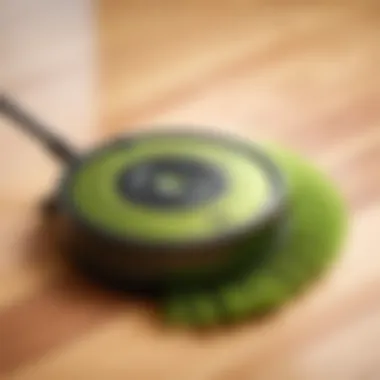
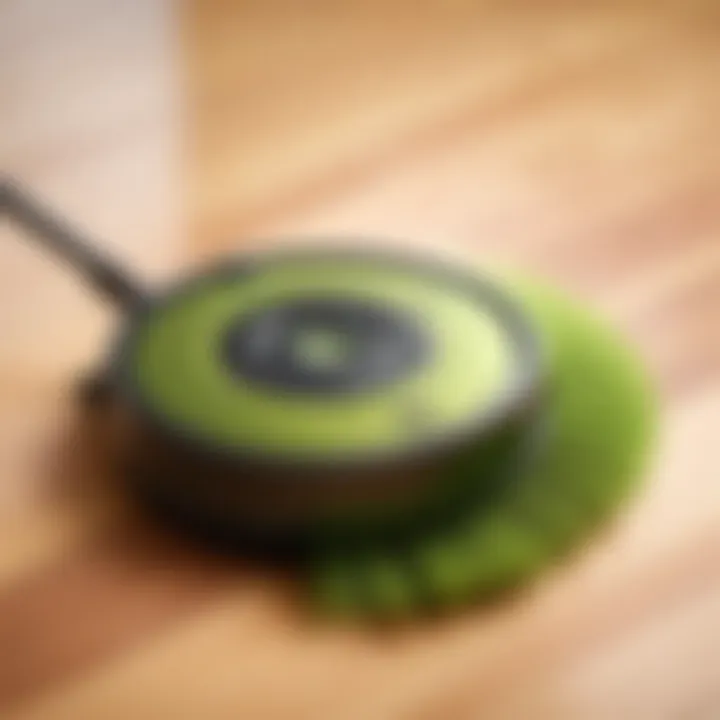
This dual-layer structure results in a unique shedding cycle. During seasonal changes, many cats go through an intense shedding phase, known as ‘blowing coat,’ where they seem to shed fur considerably more than usual. For owners, this means battling not just more hair but a variety of textures that can cling tightly to surfaces.
Additionally, cat dander, microscopic flakes of skin, often accompanies shed fur, presenting an added layer of complexity. For families with allergies, managing both hair and dander becomes an essential task—one for which Roomba technology can offer significant assistance.
Common Challenges for Cat Owners
Every cat lover knows the never-ending struggle of keeping their living space fur-free. Here are some of the challenges cat owners face when it comes to managing hair:
- Shedding Season: As mentioned earlier, during the spring and fall, cats shed like there's no tomorrow. It's almost a full-time job just trying to keep up with the piles forming in corners.
- Static Electricity: Cat hair has a tendency to cling, especially on carpets. This can make standard dusting or vacuuming feel like an uphill battle, often requiring multiple passes to capture every stubborn strand.
- Surface Struggles: Removal varies by material. Certain upholstery and carpets seem to have a magnetic attraction to cat hair, while hardwood or tile floors may show hair more easily yet demand different cleaning methods which traditional vacuums aren’t always equipped for.
- Allergic Reactions: Cat dander aggravates allergies in many people, thus maintaining a home free of these allergens is crucial. Regular cleaning schedules using effective tools can help lessen the impact significantly.
"Managing cat hair is often seen as an ongoing saga, but understanding its dynamics empowers owners to tackle it with informed strategies."
Knowing these dynamics empowers owners to select the right tools and techniques to tackle the challenges brought by cat hair. Not every vacuum is fit to contend with the unique properties of pet hair, which is where Roomba's technology shines. Those who arm themselves with this understanding will be better equipped when it comes to exploring solutions and products designed specifically for their furry companions.
Roomba's Features Suited for Pet Hair
When it comes to tackling the persistent issue of cat hair around the house, Roombas have carved out a niche tailored to the specific needs of cat owners. The design and technology of these robotic vacuums offer a variety of features that effectively combat the challenge of cat hair management. Understanding these features is crucial for anyone looking to optimize their cleaning routine and exercise smart decisions when investing in home cleaning technology. By focusing on suction power, brush systems, and navigation, Roombas stand out as an excellent ally in maintaining a fur-free environment.
Strong Suction Capabilities
One of the first impressions any pet owner will have with a Roomba is its robust suction power. This feature is not just a marketing gimmick; it's rooted in functionality. A strong suction means that the vacuum can pick up more than just visible hair; it can tackle the sneaky strands that become embedded in carpets and upholstery.
- Consistent Performance: This capability ensures a thorough clean, particularly useful during shedding seasons when cats leave trails of fur in their wake.
- Multiple Surfaces: Whether it’s tile, hardwood, or rugs, the suction performance adapts to different textures, providing a versatile cleaning option across the home.
- Less Manual Intervention: With powerful suction, homeowners spend less time using traditional vacuums or lint rollers.
Ultimately, this strong suction translates into less stress for cat owners and a cleaner home.
Advanced Brush Systems
The brush systems integrated in Roombas are engineered specifically to outperform older models and traditional vacuum designs. These brushes play a vital role in the vacuum's ability to manage cat hair.
- Tangle-Free Design: By minimizing hair tangling, these brushes ensure that performance remains high without requiring frequent maintenance. This design choice caters specifically to the kinds of issues common with long-haired breeds.
- Dual Brushes: The incorporation of dual multi-surface brushes increases the cleaning surface area, effectively grabbing more hair and debris on each pass.
- Dynamic Adjustments: Some models feature adaptive brushes that alter their position based on the flooring type they're cleaning—ensuring optimal contact and performance across surfaces.
With these advanced brush systems, Roomba ensures that cat hair doesn’t stand a chance, regardless of your flooring.
Smart Navigation Techniques
Navigating a pet-filled living space can pose numerous challenges for any cleaning device. Roombas' smart navigation techniques are another feather in their cap that helps them respond effortlessly to the dynamics of a home with cats.
- Obstacle Detection: Utilizing sensors, Roombas can detect household obstacles, avoiding entanglements with furniture or curious pets, ensuring that cleaning remains uninterrupted.
- Zoning Capability: Modern Roomba models can be programmed to focus on specific areas where pet hair accumulates the most often, like under couches or beside scratching posts.
- Mapping Technology: By mapping the house layout, a Roomba can optimize its cleaning pattern, ensuring every nook and cranny gets its due attention without the risk of missing key spots.
This smart navigation feature not merely enhances cleaning efficiency; it also instills confidence in cat owners that every corner is covered without constant human oversight.
"The secret to a fur-free home lies not just in vacuums, but in the technology that drives them. Smart features lead to smarter cleaning routines."
In summary, Roomba’s features dedicated to handling pet hair significantly reduce the burden often felt by cat owners. With strong suction, advanced brush systems, and intelligent navigation, these robotic vacuums exemplify how technology can serve to ease daily life amid pet ownership.
Practical Use Cases of Roomba for Cat Hair
When it comes to managing the relentless tide of cat hair, practicality is key. Roomba vacuums are not just nifty gadgets; they are a lifeline for cat owners grappling with the incessant shedding that seems to spring from felines like magic. This section digs deep into real-world applications, emphasizing the importance of establishing a routine and responding meaningfully to fluctuations in cat hair production.
Daily Cleaning Routines
In the pursuit of cleanliness and comfort, integrating Roomba into daily cleaning routines can greatly benefit cat households. Just think about it: a pet owner returning home after a long workday, only to find their floors dappled with cat hair and litter. Regular use of a Roomba can make this a thing of the past.
Benefits of Daily Cleaning
- Consistency: Running the Roomba daily prevents hair from becoming embedded in carpets or floors. This helps maintain a fresher home environment.
- Time-saving: Cat owners can engage in activities they enjoy, while their Roomba quietly harvests a day's worth of loose fur.
- Customizability: Scheduling cleaning sessions through the app allows flexibility, so owners can set it to clean while they are away.
A typical daily routine could involve programing the Roomba to start its cleaning cycle when the household is largely empty, perhaps during working hours or when the family is out running errands. Once done, homeowners can come back to a cleaner and more welcoming space, devoid of the fur tumbleweeds that often seem to appear out of nowhere.
Handling Excessive Shedding Periods
Cats are notorious for their shedding habits, and certain times of the year can exacerbate this phenomenon. When the seasons change, or during stress periods, owners may find themselves amidst a veritable storm of fur. This is where the prowess of Roomba technology truly shines.
It's wise to have a game plan ready for these excessive shedding episodes. Here are some practical aspects worth considering:
- Increased Cleaning Frequency: Owners could ramp up the cleaning schedules to two or three times per week. This helps manage the burden of shedding before it becomes unmanageable.
- Specialized Modes: Many Roomba models offer specific cleaning modes designed to tackle pet hair effectively. Users should familiarize themselves with these features—such as increased suction power—during critical shedding times.
- One-Time Deep Cleaning: In some cases, it might be beneficial to run the Roomba continuously for several hours when significant shedding peaks occur, for instance, post-grooming. Setting up designated deep-cleaning times can also drastically reduce buildup.
"Prevention is easier than cleaning up a disaster later." This is especially true in scenarios of uncontrolled shedding. With a little foresight and proactive usage of the Roomba, dealing with cat hair can be transformed from a dreaded chore to a manageable aspect of cat ownership.
Overall, leveraging the capabilities of a Roomba within both daily routines and during heightened shedding events can drastically change how cat owners experience home cleaning. By methodically navigating cleaning schedules and utilizing the unique features of Roombas, managing cat hair shifts from an overwhelming task to a truly seamless part of daily living.
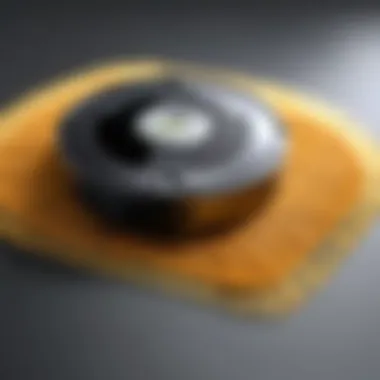
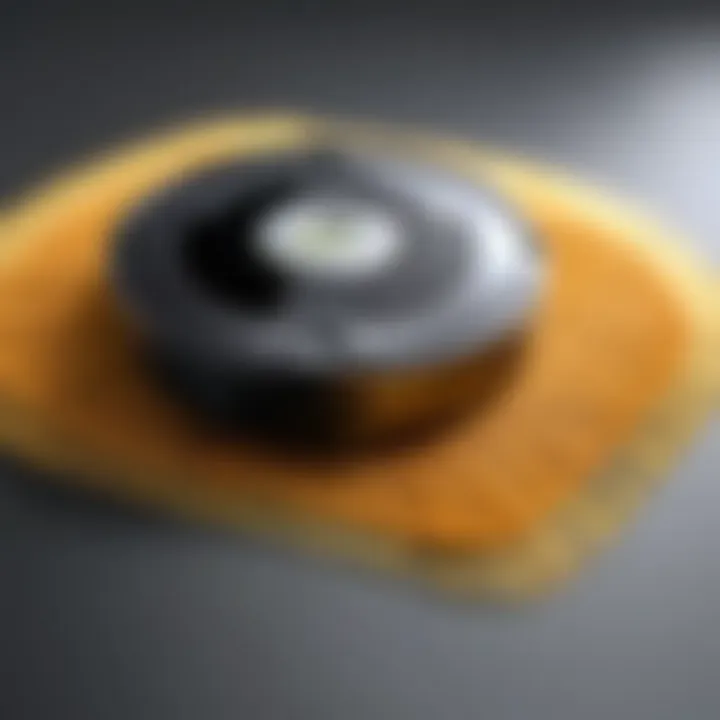
Evaluating Roomba Performance Against Cat Hair
Understanding how well a Roomba deals with cat hair is crucial for pet owners who want a reliable cleaning solution. The evaluation of Roomba performance brings a number of factors into play that reflect both its cleaning efficiency and overall user experience. This section will provide insights into its effectiveness, comparing it with traditional vacuums and sharing real user feedback.
Comparison with Traditional Vacuums
When putting Roomba head-to-head against traditional vacuums, the differences start to emerge almost immediately. Traditional vacuums often require more effort—a person needs to manually push, pull, and navigate them through spaces, which can be quite taxing, especially if you have a furry friend shedding everywhere. On the flip side, Roomba operates autonomously, moving on its own while you attend to other tasks.
Benefits of Roomba over traditional vacuums include:
- Time-saving: You can schedule cleanings while you're at work or even while you sleep, freeing up valuable time in your day.
- Consistent Performance: Regular vacuuming is crucial for homes with pets. Roomba can be set to run daily, ensuring cat hair doesn't accumulate.
- Adaptability: Many traditional vacuums struggle with certain surfaces. Roombas can handle both carpets and hard floors effectively with their smart sensor technology.
However, it would be remiss not to recognize some valid concerns. Some users find that traditional vacuums tend to offer a deeper clean due to powerful suction and direct cleaning methods. Roombas may leave a little hair behind, particularly in corners or under furniture, if they’re not specifically designed for heavy shedding.
User Feedback and Experiences
The experiences and feedback from users provide a goldmine of information about Roomba's effectiveness against cat hair. Many happy users are often quick to sing the praises of their robotic vacuum. They share stories of how the little gadget has transformed their cleaning routines, turning what used to be an arduous task into an easy one.
"I can finally keep up with my two fluffy cats. The Roomba does an impressive job cleaning cat hair daily. It's like having a new partner in cleaning!"
However, not all feedback is glowing; issues also crop up. Some users mention:
- Battery Life: For households with significant shedding, it may require multiple runs or a high-capacity model to keep up.
- Maintenance: The collection bins need frequent emptying, and regular brush cleaning is essential to prevent tangles.
- Smart Navigation Issues: Occasionally, the Roomba may get stuck or miss spots if furniture arrangement isn’t ideal.
In summary, while Roombas certainly offer convenience and efficiency, the real-world user experience highlights the need for an understanding of how to maintain optimal performance. Overall, it's essential to balance expectations with what the technology can realistically deliver.
As you evaluate Roomba’s prowess against cat hair, keep a keen eye on specific features such as its brush design, suction power, and battery capacity, as these greatly influence its cleaning abilities. This insight will empower pet owners to make informed choices when considering integrating Roomba into their cleaning routines.
Maintenance Considerations for Roombas
Maintaining a Roomba is not just a matter of keeping it tidy; it significantly impacts its performance and longevity, particularly for cat owners who face the relentless challenge of managing fur. Regular maintenance ensures that these robotic vacuums work efficiently, tackling the incessant shedding that accompanies cat ownership. By understanding how to keep your Roomba in top shape, you enhance its ability to handle the pesky hair left behind by your feline companions.
Cleaning the Roomba Components
Emptying the Dust Bin
One of the most crucial aspects of Roomba maintenance is emptying the dust bin. Though it might seem like a menial task, it plays a substantial role in maintaining overall vacuuming efficiency. A full dust bin can restrict airflow and suction power, which are vital for capturing that fine, stubborn cat hair.
The key characteristic of emptying the dust bin is, of course, frequency. Depending on the amount of fur your cat sheds, you may need to empty it after each cleaning cycle. This makes good sense, as a clean dust bin allows the Roomba to pick up more debris, ensuring a thorough clean across your floors. Specifically, when a dust bin is clear, it can effectively trap allergen-carrying particles that often hitchhike on pet hair, contributing to a healthier environment in your home.
One unique feature of the Roomba dust bin is its easy-access design. Many models come with a simple lift-and-pull mechanism, which can make the emptying process feel more streamlined.
However, on the downside, neglecting to empty the bin can lead to the Roomba underperforming and, in some cases, displaying error messages. This could result in a frustrating experience and potentially necessitate repair if undetected damage occurs.
Cleaning Filters and Brushes
Next up, cleaning the filters and brushes of your Roomba is another essential maintenance task. Filters capture allergens and pet dander, while brushes agitate and loosen hair from carpets and surfaces. Keeping these components clean is pivotal for optimal performance, especially in homes where cats roam freely.
The main feature of the filters is their capacity to block fine particles. If they clog, dust and hair can escape back into the air, frustrating the very purpose of vacuuming. Therefore, regular filtering maintenance is vital for maintaining both your vacuum's efficacy and your household's air quality. Typically, it's recommended to clean or replace the filters every one to two months, depending on usage.
Brushes are likely to gather hair quickly, particularly if your cat has longer fur. An easy and effective way to maintain these is to remove trapped fur regularly, just using a pair of scissors or a dedicated cleaning tool. Neglected brushes can lead to tanglings and clogs that inhibit the Roomba's ability to clean well.
In essence, while the upkeep may appear cumbersome, keeping filters and brushes clean offers the advantage of sustaining the high cleaning performance a Roomba is designed for. After all, a crowded brush doesn't pick up the fur—it only spreads it around.
Updating Software and Features
Having the latest software is important for any smart device, and Roombas are no different. Periodically updating software ensures that your Roomba can take advantage of the latest features and optimizations provided by the manufacturer. This could include tools designed for better navigation or enhanced cleaning algorithms catered specifically to tackle pet hair.
Many Roombas allow for easy updates through their mobile application, making it a straightforward process to stay up to date. This can pave the way for better performance and improved efficiency, mitigating some common concerns pet owners have with robotic vacuums. Keeping your Roomba's software in sync can ultimately save time and improve your overall cleaning experience.
Purchasing Considerations
When it comes to integrating robotic vacuums like Roombas into a home filled with cats, making informed purchasing decisions is paramount. This section shines a spotlight on the various elements that cat owners should take into account before clicking that "buy" button. From assessing individual needs to evaluating budget constraints, each factor plays a crucial role in ensuring the right model is chosen, ultimately enhancing the daily cleaning routine and alleviating the hassle of pet hair management.
Assessing Needs of Cat Owners
Firstly, pinpointing the specific needs of a cat owner is foundational. Cat owners are not uniform; every household comes with its own peculiarities. Some cats shed more than others, while a few have a penchant for granting their fur allegiance to various surfaces around the home. Here are some key questions for owners to mull over:
- How many cats reside in the home? The more cats in the household, the more fur and dander to contend with.
- What types of fur does your cat have? Long-haired breeds, for instance, often shed differently compared to short-haired ones.
- Which areas of the home gather the most fur? Identifying hotspots can guide users on where a Roomba should focus its attention most heavily.
Taking all these factors into account ensures that the chosen Roomba can effectively tackle the unique challenges posed by your feline companions. Cat owners may also find it valuable to read reviews from fellow pet owners to gain insights on the effectiveness of certain models in real-world settings. Knowing that others with similar feline experiences have had success or failure with particular Roombas can strongly influence decision-making.


Budget Factors and Model Selection
Just as critical as understanding needs is the notion of budget. Roomba models vary significantly in price; there's one for nearly every kind of budget, but the cheapest may not always serve best. Here are some considerations:
- Functionality vs. Price: Generally, the higher the price tag, the more features the Roomba offers. Models with advanced sensors, integration with smart home systems, and specialized brush systems designed for pet hair tend to be pricier. Evaluating if these features are essential based on your cleaning routine can save unnecessary expenditure.
- Longevity and Warranty: Sometimes spending a little extra on a model that’s built to last can save money in the long run. Warranty options can also provide a safety net for unexpected issues. Consider if the investment in a quality model outweighs the possibility of needing frequent replacements.
- Sales and Promotions: Timing can sometimes be everything. Keep an eye on seasonal sales, and check various retailer sites for any discounts. You might just find an advanced Roomba model at a lower price point during a sale event.
Purchasing the right Roomba model is not merely about price but assessing the features that would best serve the particularities of your home. By carefully weighing the needs against the budget, cat owners can avoid impetuous decisions that might lead to a less than satisfactory cleaning companion.
Technological Innovations in Cleaning Robotics
In a world where technology continues to evolve at a dizzying pace, the realm of cleaning robotics, particularly with devices like the Roomba, is no exception. Not only have these innovations revolutionized home cleaning, but they also play a significant role in managing everyday challenges, such as the seemingly insurmountable task of cat hair management. The focus here is on how these advancements not only enhance user experience but also tackle the unique needs of pet owners.
The Importance of Technological Advances
The importance of innovations in cleaning robotics extends beyond mere convenience. These developments have transformed how we approach household chores. With a busy lifestyle, the ability to automate cleaning tasks can free up valuable time for pet owners. Consequently, it's crucial to understand key elements that bring about these benefits, including connectivity features and integration with modern smart home systems.
Connectivity Features
One of the major leaps in cleaning technology is the introduction of connectivity features in robotic vacuums. Most modern Roomba models now come equipped with Wi-Fi connectivity, allowing users to manage their cleaning routines remotely. With a simple tap of a finger on a smartphone app, it’s possible to schedule cleanings, adjust settings, or even start the Roomba while away from home.
These connectivity features are not just fancy add-ons. They offer significant practical advantages such as:
- Remote Control: Start or pause cleaning sessions from anywhere, ensuring that the Roomba is working when it suits your schedule.
- Status Updates: Get real-time notifications about the cleaning progress, battery life, or any issues that may arise, like a full dustbin or tangled hair.
- Custom Cleaning Zones: Many models allow users to customize which areas to clean more frequently. This is particularly handy for cat owners, focusing on high-shedding areas without needing to vacuum quirky corners manually.
Integration with Smart Home Systems
As smart homes become the norm, the integration of Roomba technology with various systems adds another layer of convenience. For instance, Roombas can be synced with virtual assistants like Amazon's Alexa or Google Assistant. This means users can simply use voice commands to manage their robotic vacuum. Imagine saying, "Hey Google, start cleaning the living room," while settling onto the couch to watch a movie.
Moreover, integration with smart home systems allows:
- Enhanced Automation: Coalesce cleaning schedules with other home automation routines; for example, cleaning can start automatically when you leave home or the kids arrive back from school.
- Holistic Management: The smart home ecosystem allows multiple devices to communicate, ensuring the Roomba knows when it can perform its tasks without interruption—like when your pets are safely in another room.
- Energy Management: Some systems can track energy usage, helping you manage when to run your Roomba based on your home's energy consumption rates.
"The future of home cleaning isn't just about robotic vacuums, it's about an interconnected experience that simplifies life, especially for pet owners struggling with cat hair."
In sum, the marriage of connectivity and smart home integration in cleaning robotics marks a watershed moment in maintaining clean homes, particularly for those who share their space with furry companions. As the technology continues to advance, cat owners can expect even more efficient, tailored solutions to their unique cleaning needs.
Addressing Common Concerns
In the ever-evolving world of home cleaning, specifically where furry friends are involved, it’s essential to address the common concerns that arise around robotic vacuums like Roomba. Cat hair management isn’t just about aesthetics; it speaks to the hygiene and comfort of our living spaces. As cat owners know all too well, managing shedding is a persistent challenge, and robotic vacuums have emerged as a modern solution to this issue. This section focuses on two main concerns: the effectiveness of Roomba technology on various floor types, and the challenge of dealing with tangled fur.
Effectiveness on Various Floor Types
When it comes to cleaning cat hair, one critical consideration is how well these devices perform on different surfaces you might find in a typical home. Whether it's hardwood, tile, carpet, or rugs, each flooring type has its quirks that can influence how effectively a robotic vacuum picks up hair.
- Hardwood and Tile: Roombas generally excel on hard surfaces. The strong suction and specifically designed brushes can trap cat hair effortlessly. Not much needs to be said—just set it loose on these surfaces, and it’ll glide like a skater on ice.
- Carpet and Rugs: Here, things might get a bit tricky. Dense carpets can hide fur well, making it a bit more challenging for vacuums to extract all of it. However, Roombas equipped with powerful suction features and high-efficiency brush systems manage to get a fair amount out. Many models also come with settings that can adapt their cleaning approach based on the surface type. Regular use can significantly reduce the build-up.
"Robotic vacuums are not one-size-fits-all; their effectiveness can vary significantly by floor type."
- Mixed Flooring: In homes with both carpet and hard floors, Roomba models equipped with smart navigation can transition seamlessly between surfaces. Some models even adjust their cleaning intensity; this is particularly useful for pet owners. Thus, it's beneficial to research specific models to find one that is designed for mixed flooring.
Dealing with Tangled Fur
One of the more nagging issues for any cat owner is the tangled fur that builds up in the brushes of a robotic vacuum. Long-haired cats tend to leave a trail of fluff that can easily coil around the cleaning components, leading to decreased efficiency and potential damage.
So, how do you tackle this? Here are some strategies:
- Regular Maintenance: It might seem like a no-brainer, but frequently checking and cleaning the brushes makes a world of difference. Most Roomba models simplify this process, allowing users to easily remove the brushes and clear out fur. Failing to do so can lead to a frustrating encounter mid-clean when you realize your Roomba has become a fluff ball itself.
- Choosing the Right Model: Some Roombas come with specialized brushes designed specifically for pet fur. For example, models featuring rubber rollers tend to do a better job at minimizing tangles compared to traditional bristle brushes. Picking the right model can save a lot of hassle down the line.
- Pre-Cleaning: Before the Roomba hits the floor, a quick brush of the cat can dislodge loose fur—making it significantly easier for the robotic vacuum. This little step can extend the cleaning life of your device.
By being vigilant with maintenance and choosing the right equipment, pet owners can effectively manage the tangles that often frustrate the cleaning process.
Ending
As we reach the end of this exploration into how Roomba technology intersects with cat hair management, it becomes clear how crucial this topic is for cat owners and tech enthusiasts alike. The synergy between sophisticated robotic vacuums and the messy reality of cat ownership paints an important picture of modern living. The innovations in Roomba models are not merely tech gimmicks; they serve a fundamental purpose in enhancing daily living.
Final Thoughts on Roomba and Cat Hair
Using a Roomba for cat hair control isn’t just about convenience. It’s about embracing a lifestyle where technology eases burdens. Roomba’s design focuses on specifics needed by pet owners. These gadgets have transformed the vacuum game with features like powerful suction and movable brushes that tackle even the most stubborn fur. Furthermore, the ease of scheduling cleanings allows cat owners to enjoy moments with their furry companions, rather than worrying about cleanup afterward. After all, who wants to spend quality time with a vacuum instead of a cat?
"Investing in a Roomba can be likened to investing in your own sanity as a cat owner."
The user experiences showcase a resounding satisfaction, often highlighting the reduction in allergies and the sense of cleanliness after long shedding spells. By incorporating a Roomba, cat owners can create a cleaner environment, allowing them to breathe easy while still enjoying the company of their whiskered friends.
Future Trends in Robotic Cleaning
The future of robotic cleaning appears promising and vibrant. As intelligent algorithms improve and machine learning kicks into high gear, Roombas will only get better. Imagine a world where your Roomba recognizes different shedding patterns or floor types, adapting its cleaning protocol accordingly. Currently, connectivity features allow control through smartphone apps, but soon we could see more seamless interactions with smart home ecosystems.
- Predictive Cleaning Models: Future Roomba versions may predict shedding periods based on various factors like the weather or seasonal changes. This can lead to preemptive cleanings just when you need it most.
- Advanced Navigation: Upcoming models might boast better obstacle recognition, enabling them to navigate tight or cluttered spaces without missing a beat.
- Sustainability Features: As awareness around environmental impact grows, energy-efficient models or recyclable components may become standard practice—additional perks for eco-conscious owners.
The adoption of robotic vacuums like Roomba signifies a shift in how we approach cleaning—it's no longer a chore, but a dynamic aspect of our technological lifestyles. With innovations constantly on the horizon, it’s fascinating to think about how Roombas will evolve to meet user needs while keeping messy cat hair in check.



